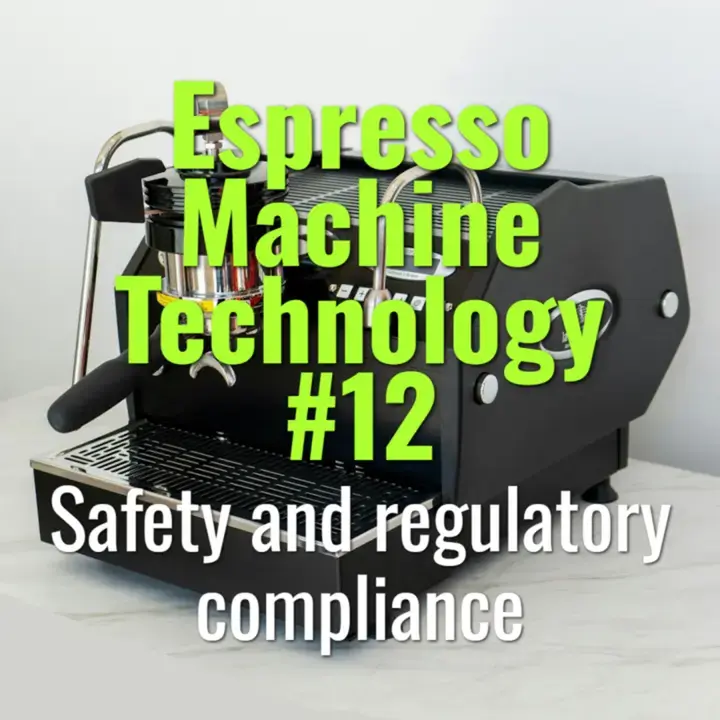Safety and regulatory compliance
Key safety practices and regulatory standards that govern espresso machine operation, installation, and maintenance.
- Coffee Basics Nerds
- 2 min read
Article 12 of 12 in Espresso Machine Technology/

Electrical Safety
- Espresso machines operate at high voltage (120–240 V) and draw significant current.
- Requirements:
- Proper grounding and certified electrical connections.
- RCD/GFCI protection to prevent electric shock.
- Routine inspection of cords, plugs, and switches.
Pressure Safety
- Boilers operate under pressure (typically 1–1.5 bar for steam, up to 9 bar for brew pressure).
- Protections:
- Pressure relief valves to prevent over-pressurization.
- Certified pressure vessels tested to comply with safety standards.
- Regular servicing to ensure valves are not clogged or corroded.
Thermal Safety
- Surfaces (groupheads, boilers, steam wands) can exceed 100 °C.
- Baristas must use proper techniques to avoid burns.
- Anti-burn steam wands and insulated panels improve operator safety.
Water Quality & Hygiene
- Machines must comply with food safety regulations (NSF, WRAS, CE, depending on region).
- Water in contact with coffee must meet potable standards.
- Backflushing and cleaning are required to prevent microbial growth.
Regulatory Compliance
- Europe: CE certification for electrical, pressure, and food-contact safety.
- North America: UL/NSF certifications.
- Other regions: Equivalent national standards.
- Employers must ensure compliance with local occupational health and safety laws.
Best Practices for Safety
- Train staff on safe operation of steam wands and electrical equipment.
- Never bypass safety valves or thermostats.
- Schedule preventive maintenance and inspections per manufacturer guidance.
- Keep documentation of compliance certificates and service logs.
Summary
Espresso machine safety covers electrical, pressure, thermal, and hygiene risks. Regulatory compliance ensures machines meet national and international standards, while good training and maintenance protect both baristas and customers.